#adaptive software methodology
Explore tagged Tumblr posts
Text
Adaptive Software Development (ASD) thrives on embracing change as a core principle, enabling teams to respond dynamically to evolving requirements. By fostering flexibility and collaboration, ASD empowers organizations to stay ahead in a rapidly changing environment, delivering value to customers faster and more effectively. Check complete guide on this.
0 notes
Text
#Adaptive Software Development#Agile Methodologies#Software Development Process#Iterative Development#Project Management in Software Engineering
0 notes
Text
Why Adaptive Software Development is the Future of Agile
Discover why Adaptive Software Development (ASD) is redefining Agile with flexibility, collaboration, and continuous improvement for complex projects.
Agile methodologies have become the cornerstone of modern software development, offering a framework that prioritizes flexibility, rapid delivery, and close collaboration between developers and stakeholders. Among the agile frameworks, Adaptive Software Development (ASD) has emerged as a robust approach designed to handle the complexities of evolving projects, making it increasingly popular in…
#Adaptive Software Development#agile#Agile Framework#Agile Methodology#ASD#autism#Future Of Agile#mental-health#Project Management#Rapid Application Development#Software Development#Tech Innovation
0 notes
Text
"Open" "AI" isn’t

Tomorrow (19 Aug), I'm appearing at the San Diego Union-Tribune Festival of Books. I'm on a 2:30PM panel called "Return From Retirement," followed by a signing:
https://www.sandiegouniontribune.com/festivalofbooks

The crybabies who freak out about The Communist Manifesto appearing on university curriculum clearly never read it – chapter one is basically a long hymn to capitalism's flexibility and inventiveness, its ability to change form and adapt itself to everything the world throws at it and come out on top:
https://www.marxists.org/archive/marx/works/1848/communist-manifesto/ch01.htm#007
Today, leftists signal this protean capacity of capital with the -washing suffix: greenwashing, genderwashing, queerwashing, wokewashing – all the ways capital cloaks itself in liberatory, progressive values, while still serving as a force for extraction, exploitation, and political corruption.
A smart capitalist is someone who, sensing the outrage at a world run by 150 old white guys in boardrooms, proposes replacing half of them with women, queers, and people of color. This is a superficial maneuver, sure, but it's an incredibly effective one.
In "Open (For Business): Big Tech, Concentrated Power, and the Political Economy of Open AI," a new working paper, Meredith Whittaker, David Gray Widder and Sarah B Myers document a new kind of -washing: openwashing:
https://papers.ssrn.com/sol3/papers.cfm?abstract_id=4543807
Openwashing is the trick that large "AI" companies use to evade regulation and neutralizing critics, by casting themselves as forces of ethical capitalism, committed to the virtue of openness. No one should be surprised to learn that the products of the "open" wing of an industry whose products are neither "artificial," nor "intelligent," are also not "open." Every word AI huxters say is a lie; including "and," and "the."
So what work does the "open" in "open AI" do? "Open" here is supposed to invoke the "open" in "open source," a movement that emphasizes a software development methodology that promotes code transparency, reusability and extensibility, which are three important virtues.
But "open source" itself is an offshoot of a more foundational movement, the Free Software movement, whose goal is to promote freedom, and whose method is openness. The point of software freedom was technological self-determination, the right of technology users to decide not just what their technology does, but who it does it to and who it does it for:
https://locusmag.com/2022/01/cory-doctorow-science-fiction-is-a-luddite-literature/
The open source split from free software was ostensibly driven by the need to reassure investors and businesspeople so they would join the movement. The "free" in free software is (deliberately) ambiguous, a bit of wordplay that sometimes misleads people into thinking it means "Free as in Beer" when really it means "Free as in Speech" (in Romance languages, these distinctions are captured by translating "free" as "libre" rather than "gratis").
The idea behind open source was to rebrand free software in a less ambiguous – and more instrumental – package that stressed cost-savings and software quality, as well as "ecosystem benefits" from a co-operative form of development that recruited tinkerers, independents, and rivals to contribute to a robust infrastructural commons.
But "open" doesn't merely resolve the linguistic ambiguity of libre vs gratis – it does so by removing the "liberty" from "libre," the "freedom" from "free." "Open" changes the pole-star that movement participants follow as they set their course. Rather than asking "Which course of action makes us more free?" they ask, "Which course of action makes our software better?"
Thus, by dribs and drabs, the freedom leeches out of openness. Today's tech giants have mobilized "open" to create a two-tier system: the largest tech firms enjoy broad freedom themselves – they alone get to decide how their software stack is configured. But for all of us who rely on that (increasingly unavoidable) software stack, all we have is "open": the ability to peer inside that software and see how it works, and perhaps suggest improvements to it:
https://www.youtube.com/watch?v=vBknF2yUZZ8
In the Big Tech internet, it's freedom for them, openness for us. "Openness" – transparency, reusability and extensibility – is valuable, but it shouldn't be mistaken for technological self-determination. As the tech sector becomes ever-more concentrated, the limits of openness become more apparent.
But even by those standards, the openness of "open AI" is thin gruel indeed (that goes triple for the company that calls itself "OpenAI," which is a particularly egregious openwasher).
The paper's authors start by suggesting that the "open" in "open AI" is meant to imply that an "open AI" can be scratch-built by competitors (or even hobbyists), but that this isn't true. Not only is the material that "open AI" companies publish insufficient for reproducing their products, even if those gaps were plugged, the resource burden required to do so is so intense that only the largest companies could do so.
Beyond this, the "open" parts of "open AI" are insufficient for achieving the other claimed benefits of "open AI": they don't promote auditing, or safety, or competition. Indeed, they often cut against these goals.
"Open AI" is a wordgame that exploits the malleability of "open," but also the ambiguity of the term "AI": "a grab bag of approaches, not… a technical term of art, but more … marketing and a signifier of aspirations." Hitching this vague term to "open" creates all kinds of bait-and-switch opportunities.
That's how you get Meta claiming that LLaMa2 is "open source," despite being licensed in a way that is absolutely incompatible with any widely accepted definition of the term:
https://blog.opensource.org/metas-llama-2-license-is-not-open-source/
LLaMa-2 is a particularly egregious openwashing example, but there are plenty of other ways that "open" is misleadingly applied to AI: sometimes it means you can see the source code, sometimes that you can see the training data, and sometimes that you can tune a model, all to different degrees, alone and in combination.
But even the most "open" systems can't be independently replicated, due to raw computing requirements. This isn't the fault of the AI industry – the computational intensity is a fact, not a choice – but when the AI industry claims that "open" will "democratize" AI, they are hiding the ball. People who hear these "democratization" claims (especially policymakers) are thinking about entrepreneurial kids in garages, but unless these kids have access to multi-billion-dollar data centers, they can't be "disruptors" who topple tech giants with cool new ideas. At best, they can hope to pay rent to those giants for access to their compute grids, in order to create products and services at the margin that rely on existing products, rather than displacing them.
The "open" story, with its claims of democratization, is an especially important one in the context of regulation. In Europe, where a variety of AI regulations have been proposed, the AI industry has co-opted the open source movement's hard-won narrative battles about the harms of ill-considered regulation.
For open source (and free software) advocates, many tech regulations aimed at taming large, abusive companies – such as requirements to surveil and control users to extinguish toxic behavior – wreak collateral damage on the free, open, user-centric systems that we see as superior alternatives to Big Tech. This leads to the paradoxical effect of passing regulation to "punish" Big Tech that end up simply shaving an infinitesimal percentage off the giants' profits, while destroying the small co-ops, nonprofits and startups before they can grow to be a viable alternative.
The years-long fight to get regulators to understand this risk has been waged by principled actors working for subsistence nonprofit wages or for free, and now the AI industry is capitalizing on lawmakers' hard-won consideration for collateral damage by claiming to be "open AI" and thus vulnerable to overbroad regulation.
But the "open" projects that lawmakers have been coached to value are precious because they deliver a level playing field, competition, innovation and democratization – all things that "open AI" fails to deliver. The regulations the AI industry is fighting also don't necessarily implicate the speech implications that are core to protecting free software:
https://www.eff.org/deeplinks/2015/04/remembering-case-established-code-speech
Just think about LLaMa-2. You can download it for free, along with the model weights it relies on – but not detailed specs for the data that was used in its training. And the source-code is licensed under a homebrewed license cooked up by Meta's lawyers, a license that only glancingly resembles anything from the Open Source Definition:
https://opensource.org/osd/
Core to Big Tech companies' "open AI" offerings are tools, like Meta's PyTorch and Google's TensorFlow. These tools are indeed "open source," licensed under real OSS terms. But they are designed and maintained by the companies that sponsor them, and optimize for the proprietary back-ends each company offers in its own cloud. When programmers train themselves to develop in these environments, they are gaining expertise in adding value to a monopolist's ecosystem, locking themselves in with their own expertise. This a classic example of software freedom for tech giants and open source for the rest of us.
One way to understand how "open" can produce a lock-in that "free" might prevent is to think of Android: Android is an open platform in the sense that its sourcecode is freely licensed, but the existence of Android doesn't make it any easier to challenge the mobile OS duopoly with a new mobile OS; nor does it make it easier to switch from Android to iOS and vice versa.
Another example: MongoDB, a free/open database tool that was adopted by Amazon, which subsequently forked the codebase and tuning it to work on their proprietary cloud infrastructure.
The value of open tooling as a stickytrap for creating a pool of developers who end up as sharecroppers who are glued to a specific company's closed infrastructure is well-understood and openly acknowledged by "open AI" companies. Zuckerberg boasts about how PyTorch ropes developers into Meta's stack, "when there are opportunities to make integrations with products, [so] it’s much easier to make sure that developers and other folks are compatible with the things that we need in the way that our systems work."
Tooling is a relatively obscure issue, primarily debated by developers. A much broader debate has raged over training data – how it is acquired, labeled, sorted and used. Many of the biggest "open AI" companies are totally opaque when it comes to training data. Google and OpenAI won't even say how many pieces of data went into their models' training – let alone which data they used.
Other "open AI" companies use publicly available datasets like the Pile and CommonCrawl. But you can't replicate their models by shoveling these datasets into an algorithm. Each one has to be groomed – labeled, sorted, de-duplicated, and otherwise filtered. Many "open" models merge these datasets with other, proprietary sets, in varying (and secret) proportions.
Quality filtering and labeling for training data is incredibly expensive and labor-intensive, and involves some of the most exploitative and traumatizing clickwork in the world, as poorly paid workers in the Global South make pennies for reviewing data that includes graphic violence, rape, and gore.
Not only is the product of this "data pipeline" kept a secret by "open" companies, the very nature of the pipeline is likewise cloaked in mystery, in order to obscure the exploitative labor relations it embodies (the joke that "AI" stands for "absent Indians" comes out of the South Asian clickwork industry).
The most common "open" in "open AI" is a model that arrives built and trained, which is "open" in the sense that end-users can "fine-tune" it – usually while running it on the manufacturer's own proprietary cloud hardware, under that company's supervision and surveillance. These tunable models are undocumented blobs, not the rigorously peer-reviewed transparent tools celebrated by the open source movement.
If "open" was a way to transform "free software" from an ethical proposition to an efficient methodology for developing high-quality software; then "open AI" is a way to transform "open source" into a rent-extracting black box.
Some "open AI" has slipped out of the corporate silo. Meta's LLaMa was leaked by early testers, republished on 4chan, and is now in the wild. Some exciting stuff has emerged from this, but despite this work happening outside of Meta's control, it is not without benefits to Meta. As an infamous leaked Google memo explains:
Paradoxically, the one clear winner in all of this is Meta. Because the leaked model was theirs, they have effectively garnered an entire planet's worth of free labor. Since most open source innovation is happening on top of their architecture, there is nothing stopping them from directly incorporating it into their products.
https://www.searchenginejournal.com/leaked-google-memo-admits-defeat-by-open-source-ai/486290/
Thus, "open AI" is best understood as "as free product development" for large, well-capitalized AI companies, conducted by tinkerers who will not be able to escape these giants' proprietary compute silos and opaque training corpuses, and whose work product is guaranteed to be compatible with the giants' own systems.
The instrumental story about the virtues of "open" often invoke auditability: the fact that anyone can look at the source code makes it easier for bugs to be identified. But as open source projects have learned the hard way, the fact that anyone can audit your widely used, high-stakes code doesn't mean that anyone will.
The Heartbleed vulnerability in OpenSSL was a wake-up call for the open source movement – a bug that endangered every secure webserver connection in the world, which had hidden in plain sight for years. The result was an admirable and successful effort to build institutions whose job it is to actually make use of open source transparency to conduct regular, deep, systemic audits.
In other words, "open" is a necessary, but insufficient, precondition for auditing. But when the "open AI" movement touts its "safety" thanks to its "auditability," it fails to describe any steps it is taking to replicate these auditing institutions – how they'll be constituted, funded and directed. The story starts and ends with "transparency" and then makes the unjustifiable leap to "safety," without any intermediate steps about how the one will turn into the other.
It's a Magic Underpants Gnome story, in other words:
Step One: Transparency
Step Two: ??
Step Three: Safety
https://www.youtube.com/watch?v=a5ih_TQWqCA
Meanwhile, OpenAI itself has gone on record as objecting to "burdensome mechanisms like licenses or audits" as an impediment to "innovation" – all the while arguing that these "burdensome mechanisms" should be mandatory for rival offerings that are more advanced than its own. To call this a "transparent ruse" is to do violence to good, hardworking transparent ruses all the world over:
https://openai.com/blog/governance-of-superintelligence
Some "open AI" is much more open than the industry dominating offerings. There's EleutherAI, a donor-supported nonprofit whose model comes with documentation and code, licensed Apache 2.0. There are also some smaller academic offerings: Vicuna (UCSD/CMU/Berkeley); Koala (Berkeley) and Alpaca (Stanford).
These are indeed more open (though Alpaca – which ran on a laptop – had to be withdrawn because it "hallucinated" so profusely). But to the extent that the "open AI" movement invokes (or cares about) these projects, it is in order to brandish them before hostile policymakers and say, "Won't someone please think of the academics?" These are the poster children for proposals like exempting AI from antitrust enforcement, but they're not significant players in the "open AI" industry, nor are they likely to be for so long as the largest companies are running the show:
https://papers.ssrn.com/sol3/papers.cfm?abstract_id=4493900


I'm kickstarting the audiobook for "The Internet Con: How To Seize the Means of Computation," a Big Tech disassembly manual to disenshittify the web and make a new, good internet to succeed the old, good internet. It's a DRM-free book, which means Audible won't carry it, so this crowdfunder is essential. Back now to get the audio, Verso hardcover and ebook:
http://seizethemeansofcomputation.org

If you'd like an essay-formatted version of this post to read or share, here's a link to it on pluralistic.net, my surveillance-free, ad-free, tracker-free blog:
https://pluralistic.net/2023/08/18/openwashing/#you-keep-using-that-word-i-do-not-think-it-means-what-you-think-it-means

Image: Cryteria (modified) https://commons.wikimedia.org/wiki/File:HAL9000.svg
CC BY 3.0 https://creativecommons.org/licenses/by/3.0/deed.en
#pluralistic#llama-2#meta#openwashing#floss#free software#open ai#open source#osi#open source initiative#osd#open source definition#code is speech
253 notes
·
View notes
Text
In the realm of artificial intelligence, the devil is in the details. The mantra of “move fast and break things,” once celebrated in the tech industry, is a perilous approach when applied to AI development. This philosophy, born in the era of social media giants, prioritizes rapid iteration over meticulous scrutiny, a dangerous gamble in the high-stakes world of AI.
AI systems, unlike traditional software, are not merely lines of code executing deterministic functions. They are complex, adaptive entities that learn from vast datasets, often exhibiting emergent behaviors that defy simple prediction. The intricacies of neural networks, for instance, involve layers of interconnected nodes, each adjusting weights through backpropagation—a process that, while mathematically elegant, is fraught with potential for unintended consequences.
The pitfalls of a hasty approach in AI are manifold. Consider the issue of bias, a pernicious problem that arises from the minutiae of training data. When datasets are not meticulously curated, AI models can inadvertently perpetuate or even exacerbate societal biases. This is not merely a technical oversight but a profound ethical failure, one that can have real-world repercussions, from discriminatory hiring practices to biased law enforcement tools.
Moreover, the opacity of AI models, particularly deep learning systems, poses a significant challenge. These models operate as black boxes, their decision-making processes inscrutable even to their creators. The lack of transparency is not just a technical hurdle but a barrier to accountability. In critical applications, such as healthcare or autonomous vehicles, the inability to explain an AI’s decision can lead to catastrophic outcomes.
To avoid these pitfalls, a paradigm shift is necessary. The AI community must embrace a culture of “move thoughtfully and fix things.” This involves a rigorous approach to model validation and verification, ensuring that AI systems are robust, fair, and transparent. Techniques such as adversarial testing, where models are exposed to challenging scenarios, can help identify vulnerabilities before deployment.
Furthermore, interdisciplinary collaboration is crucial. AI developers must work alongside ethicists, domain experts, and policymakers to ensure that AI systems align with societal values and legal frameworks. This collaborative approach can help bridge the gap between technical feasibility and ethical responsibility.
In conclusion, the cavalier ethos of “move fast and break things” is ill-suited to the nuanced and impactful domain of AI. By focusing on the minutiae, adopting rigorous testing methodologies, and fostering interdisciplinary collaboration, we can build AI systems that are not only innovative but also safe, fair, and accountable. The future of AI depends not on speed, but on precision and responsibility.
#minutia#AI#skeptic#skepticism#artificial intelligence#general intelligence#generative artificial intelligence#genai#thinking machines#safe AI#friendly AI#unfriendly AI#superintelligence#singularity#intelligence explosion#bias
3 notes
·
View notes
Text
Key Skills You Need to Succeed in BE Electrical Engineering
For those pursuing a Bachelor of Engineering (BE) in Electrical Engineering, it's essential to equip yourself with the right skills to thrive in a competitive field. Mailam Engineering College offers a robust program that prepares students for the challenges and opportunities in this dynamic discipline. In this article, we will explore the key skills needed to succeed in electrical engineering, along with helpful resources for further reading.
1. Strong Analytical Skills
Electrical engineers must possess strong analytical skills to design, test, and troubleshoot systems and components. This involves understanding complex mathematical concepts and applying them to real-world problems. Being able to analyze data and make informed decisions is crucial in this field.
2. Proficiency in Mathematics
Mathematics is the backbone of electrical engineering. Courses often involve calculus, differential equations, and linear algebra. A solid grasp of these mathematical principles is vital for modeling and solving engineering problems.
3. Technical Knowledge
A thorough understanding of electrical theory, circuit analysis, and systems is essential. Students should familiarize themselves with concepts such as Ohm's law, Kirchhoff's laws, and the fundamentals of electromagnetism. Engaging in hands-on projects can significantly enhance technical knowledge. For inspiration, check out Top 10 Projects for BE Electrical Engineering.
4. Familiarity with Software Tools
Modern electrical engineering relies heavily on software for design, simulation, and analysis. Proficiency in tools like MATLAB, Simulink, and CAD software is highly beneficial. Being comfortable with programming languages such as Python or C can also enhance your ability to tackle complex engineering challenges.
5. Problem-Solving Skills
Electrical engineers frequently encounter complex problems that require innovative solutions. Developing strong problem-solving skills enables you to approach challenges methodically, think creatively, and implement effective solutions.
6. Communication Skills
Effective communication is key in engineering. Whether working in teams or presenting projects, being able to articulate ideas clearly is crucial. Electrical engineers often collaborate with professionals from various disciplines, making strong interpersonal skills essential.
7. Project Management
Understanding the principles of project management is important for engineers, as they often work on projects that require careful planning, resource allocation, and time management. Familiarity with project management tools and methodologies can set you apart in the job market.
8. Attention to Detail
In electrical engineering, small errors can have significant consequences. Attention to detail is vital when designing circuits, conducting experiments, or writing reports. Developing a meticulous approach to your work will help you maintain high standards of quality and safety.
9. Continuous Learning
The field of electrical engineering is constantly evolving, with new technologies and methodologies emerging regularly. A commitment to lifelong learning will ensure you stay updated on industry trends and advancements. Exploring additional resources, such as the article on Top Skills for Electrical Engineering Jobs, can further enhance your knowledge.
Conclusion
Succeeding in BE Electrical Engineering requires a combination of technical skills, analytical thinking, and effective communication. By focusing on these key areas and actively seeking opportunities to apply your knowledge through projects and internships, you can position yourself for a successful career in electrical engineering. Remember, continuous improvement and adaptability will serve you well in this ever-changing field.
4 notes
·
View notes
Text
Is Lotto Champ Legit Or Not? - Lotto Champ Software Download Reviews

Read this in-depth Lotto Champ Software review to discover if this system truly boosts your winning odds. Is it worth the hype? Find out here!
Lotto Champ Software promises to increase lottery wins using a mathematical strategy. But does it really work? This review breaks it all down!
Introduction
Winning the lottery has been a dream for many, but let’s face it—luck alone doesn’t always cut it. That’s where Lotto Champ Software steps in, claiming to use an advanced algorithm to boost your chances. But does it really hold water, or is it just another gimmick? Let’s dive into this review and see what makes it tick!
What is Lotto Champ Software?
Lotto Champ Software is a lottery prediction system designed to increase your odds of winning. It claims to use a strategic number selection process based on previous winning patterns.
Key Features:
Smart Number Selection – Uses statistical analysis to pick numbers with higher chances of appearing.
Easy-to-Use Interface – No complicated formulas; just follow the recommendations.
Multiple Lottery Compatibility – Works with various lottery formats worldwide.
Frequent Updates – Regularly updated to adapt to changes in lottery patterns.
How Does Lotto Champ Software Work?
The software analyzes past lottery results, identifies patterns, and suggests the best numbers to play. Rather than relying on pure luck, it aims to tilt the odds slightly in your favor.
Steps to Use:
Download & Install – The software is simple to set up on any device.
Select Your Lottery – Choose the lottery type you want to play.
Get Number Predictions – The system generates a list of numbers based on historical data.
Play and Wait – Use the numbers provided and see how they perform.
Pros and Cons of Lotto Champ Software
Every product has its highs and lows. Here’s what stands out:
Pros:
✅ Easy to Use – No technical knowledge required. ✅ Data-Driven – Uses real lottery statistics for predictions. ✅ Supports Various Lotteries – Works with different types of games. ✅ Saves Time – No need to manually analyze past results...
Is Lotto Champ Legit Or Not? Full Lotto Champ Software Download Reviews here! at https://scamorno.com/LottoChamp-Review-Software/?id=tumblr-legitornotdownload
Cons:
❌ Not a Guarantee – There’s still an element of luck involved. ❌ Paid Software – It requires an investment. ❌ Limited Information on Algorithm – The exact methodology remains undisclosed.
Does Lotto Champ Software Actually Work?
Now, here’s the million-dollar question! While Lotto Champ Software isn’t a magic wand, many users claim they’ve seen improvements in their lottery success. By using statistical strategies instead of random guesses, it provides a more structured approach.
Users have reported:
More frequent smaller wins
Better number selection than random guessing
A sense of control over their lottery picks
However, since lottery results are still unpredictable, it’s important to manage expectations.
Who Should Use Lotto Champ Software?
This software is ideal for:
Casual Lottery Players who want to improve their odds.
Regular Participants who spend money on tickets frequently.
Data-Driven Gamblers who enjoy numbers and probability.
If you’re looking for a risk-free way to guarantee wins, this might not be for you. But if you want to approach the lottery with a bit of strategy, it’s worth considering.
FAQs About Lotto Champ Software
1. Is Lotto Champ Software a scam?
No, it’s not a scam. While it doesn’t promise guaranteed wins, it provides a structured approach to number selection.
2. Can this software predict the exact winning numbers?
Not exactly. It uses statistical analysis to improve odds, but it can’t guarantee a jackpot.
3. Do I need any special skills to use it?
Not at all! The interface is user-friendly, and everything is automated.
4. Is Lotto Champ Software legal?
Yes, using software for lottery number selection is completely legal in most regions.
5. How much does Lotto Champ Software cost?
The price varies, but it’s a one-time investment compared to constantly buying random tickets...
Is Lotto Champ Legit Or Not? Full Lotto Champ Software Download Reviews here! at https://scamorno.com/LottoChamp-Review-Software/?id=tumblr-legitornotdownload
2 notes
·
View notes
Text
Automated Testing vs. Manual Testing: Which One is Right for Your Project?

Achieving high-quality, reliable software stands as a fundamental requirement in software development. Successful testing functions as an essential tool to discover faults and build performance capabilities that create better user experience outcomes. Two main testing methods dominate the field: automated testing and manual testing. The process of quality software assurance uses different testing approaches that demonstrate their own advantages as well as weaknesses according to specific project requirements and scenarios. We will explore the specifics to determine which testing process works best for your system development efforts.
1. What Is Manual Testing?
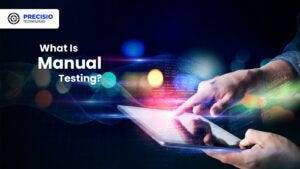
Manual testing involves a human tester manually executing test cases without using automation tools. Key Characteristics:
The methodology focuses its efforts on user interface together with usability and experience testing.
Human-centered applications where selection requires discretion include ad hoc testing and enumerative testing as well as examinations that need human evaluation.
Human performers are required during this approach; thus, it demands substantial time.
2. What Is Automated Testing?
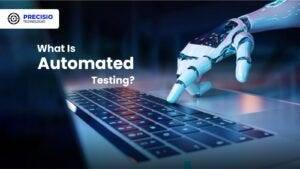
Software performing automated testing executes test cases through workflows and helpers. Key Characteristics:
Efficient for repetitive and regression testing.
Users must spend money on tools along with developing custom scripts for testing.
Reduces human error.
3. Advantages of Manual Testing

Human Intuition: Software testing professionals can detect kernels through their human cognitive ability that automated tools cannot match. The observation and evaluation of visual elements runs more efficiently through human operatives instead of advanced tools.
Flexibility: This method suits exploratory testing specifically because there are no pre-determined scripts available.
Low Initial Investment: Running this approach does not need tool purchases or applications to develop automation frameworks.
Adaptable for UI/UX Testing: Running this approach does not need tool purchases or applications to develop automation frameworks.
4. Advantages of Automated Testing
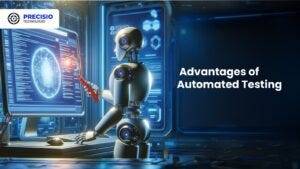
Speed: Executes repetitive tests much faster than humans.
Scalability: The system proves most effective for extensive projects that need constant system updates.
Accuracy: When performing recurring actions, automated systems minimize the chances of human mistakes.
Cost-Efficient in the Long Run: Once established and implemented, the system demands costly investments but ensures continuous development expenses decrease over time.
Better for CI/CD Pipelines: Such testing technology connects various development pipelines that support agile and DevOps methodologies.
5. Disadvantages of Manual Testing
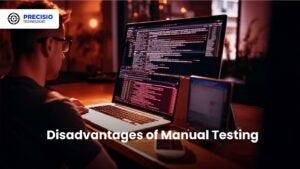
Time-Consuming: The manual performance of repeated tests leads to delayed completion of projects.
Error-Prone: Large applications contain tiny bugs that human testers commonly fail to detect.
Not Ideal for Scalability: The process of increasing manual testing needs additional testers to avoid cost escalations.
6. Disadvantages of Automated Testing
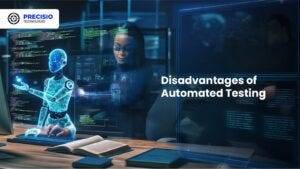
Initial Costs: Organizations must provide high financial resources to procure testing tools together with developing programming constructs.
Limited to Pre-Defined Scenarios: These testing approaches work poorly for handling exploratory or ad hoc testing.
Requires Maintenance: Test scripts need frequent updates when application changes occur.
Not Suitable for UI/UX Testing: Struggles with subjective user experience evaluations.
7. When to Use Manual Testing

Small Projects: The testing method proves beneficial at a low cost for small applications and provides quick assessments.
Exploratory Testing: Testing this approach benefits projects whose scripts have not been defined yet or need evaluation for newly added features.
Visual and Usability Testing: Performing assessments on interface components together with design features.
8. When to Use Automated Testing
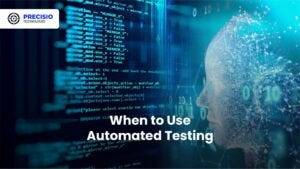
Large Projects: Handles scalability for projects with frequent updates.
Regression Testing: Program testing becomes more efficient through automation since automated assessments perform multiple tests following each update process.
Performance Testing: The system performs efficient capabilities to conduct load testing and stress testing.
Continuous Development Environments: Agile progression and DevOps implementations need automation as a core requirement.
READ MORE- https://www.precisio.tech/automated-testing-vs-manual-testing-which-one-is-right-for-your-project/
2 notes
·
View notes
Text
CODING FOR KIDS WITH SPECIAL NEEDS
The world of coding can be scary, with obscure symbols and complicated logic. What if we told you it might be a creative and problem-solving playground for children with special needs? Intrigued? Buckle up, because we’re going to discover the thrilling world of adaptive coding strategies!

Here’s how coding transforms into an inclusive playground:
Block-based coding language: Scratch, Blockly, and Codemonkey Jr, these drag-and-drop interfaces make coding more visual and intuitive, which is ideal for children who struggle with traditional text-based coding. Imagine making colorful animations with just a few clicks!
Voice-activated coding: Speech recognition software allows children with physical restrictions to code using voice commands. This enables kids to contribute and express their creativity via code.
Gamification: Gamifying learning makes it more enjoyable and inspiring. RoboGarden, for example, turns coding into a game in which children solve puzzles and accomplish challenges, thus fostering problem-solving abilities in a fun way.
Physical computing: Makey Makey and Sphero robots are two examples of tools that help to connect the digital and physical realms. Coding becomes tangible and interesting for kids when they can program their robots to overcome difficulties or make their own musical instruments.
Multisensory learning: Multisensory learning environments are very beneficial for kids with special needs. Interactive coding exercises that combine visual, tactile, and audio components improve learning and memory. Through the combination of physical building and programming, interactive coding toys such as Botley the Coding Robot or LEGO Education SPIKE Prime offer a hands-on learning experience.

Several initiatives have successfully implemented adaptive learning techniques to teach coding to kids with special needs:
CoderDojo’s Autism Pilot Program: The international network of coding clubs CoderDojo has introduced a trial program, especially for kids with autism. Through the use of customized support, visual aids, and sensory breaks, the program established a warm and inviting atmosphere in which kids could flourish.
Tech Access: TeachAccess promotes accessible and inclusive design in technology-based learning. Their materials and training courses give teachers the skills and resources they need to design coding curricula that are accessible to learners of all skill levels.
Apple’s Everyone Can Code Curriculum: All students can benefit from inclusive and accessible coding instruction thanks to Apple’s curriculum, which includes activities and materials designed specifically for students with disabilities.
Remember: It’s all about finding the correct match! Investigate multiple coding platforms, try out new strategies, and celebrate little wins. There is no one-size-fits-all solution, so customize the learning experience for your child’s individual needs and interests.
Coding is more than just building snazzy websites or mobile apps. It is about developing problem-solving abilities, promoting creativity, and instilling confidence. By embracing adaptive learning methodologies, we can provide access to this exciting world for all children, empowering them to become future coders, inventors, and innovators.
#coding#programming#education#future#digital world#innovation#tech#coding for kids#artificial intelligence#coding course#adhd#autism#neurodivergent#neurodiversity#autistic#asd#lego builds#makeymakey
7 notes
·
View notes
Text
"Top Reasons Applicants Miss Out on World Bank Recruitment Opportunities"
The World Bank is a prominent international economic organization that offers loans and offers to nations for development tasks aimed toward lowering poverty and supporting monetary boom. Recruitment results for positions on the World Bank are eagerly awaited by using heaps of candidates international due to the employer’s popularity and the particular opportunities it gives to contribute to international development.

World Bank recruitment result announcement date
Overview of World Bank Recruitment
The World Bank recruits individuals for diverse roles, starting from economists and challenge managers to economic analysts, environmental experts, and communication specialists. The recruitment procedure is rigorous and competitive, often regarding a couple of tiers of screening and evaluation. These tiers typically consist of:
Application Submission: Candidates put up their applications online, together with a résumé, cover letter, and responses to unique questions.
Initial Screening: Applications are reviewed for eligibility, relevance of qualifications, and alignment with the job requirements.
Technical Assessment: For many positions, candidates have to complete technical assessments or case research that evaluate their competencies and know-how.
Panel Interview: Shortlisted candidates are invited for an interview with a panel of World Bank group of workers. These interviews determine technical understanding, trouble-fixing abilties, and alignment with the employer’s values.
Reference Checks: Successful applicants go through reference checks to verify their professional history and credentials.
Final Decision and Offer: Based on the evaluation, the World Bank extends gives to the most appropriate candidates.
Factors Influencing Recruitment Results
Several elements decide whether a candidate progresses inside the World Bank recruitment technique:
1. Relevant Qualifications
The World Bank seeks people with superior ranges in disciplines relevant to the position, which includes economics, finance, public policy, or environmental science. Candidates with strong academic statistics and specialized understanding frequently have an area.
2. Professional Experience
Experience in worldwide development, project management, or associated fields is a enormous benefit. The World Bank values candidates who've verified their capacity to paintings in complex, move-cultural environments.
Three. Technical Skills
For technical roles, talent in unique tools, methodologies, or technology is crucial. For instance, a candidate applying for a statistics analyst position may need understanding in statistical software such as Stata, R, or Python.
Four. Language Proficiency
As a international institution, the World Bank values multilingual candidates. Proficiency in English is obligatory, at the same time as knowledge of different languages (e.G., French, Spanish, Arabic, or Chinese) is quite appropriate.
5. Soft Skills
The capacity to speak efficiently, collaborate in teams, and adapt to exclusive cultural contexts is vital. Candidates with strong interpersonal skills frequently carry out well in panel interviews.
Analyzing Recruitment Results
Successful Candidates
Candidates who get hold of gives from the World Bank frequently display a mixture of sturdy academic credentials, professional achievements, and alignment with the group’s project. Their success might also stem from:
Demonstrating a deep expertise of development challenges.
Presenting modern answers to case research or technical checks.
Highlighting their impact in preceding roles through measurable achievements.
Successful applicants are generally informed of their effects thru email, accompanied by special instructions for the following steps, inclusive of agreement discussions, onboarding, and relocation (if applicable).
Unsuccessful Candidates
For the ones no longer decided on, comments can also or may not be supplied, relying at the role and quantity of programs. Common reasons for rejection include:
Insufficient alignment between the candidate’s profile and the task necessities.
Weaker performance in technical tests or interviews compared to different applicants.
Lack of demonstrable enjoy in global improvement.
Lessons for Candidates
Whether a hit or no longer, candidates can derive precious insights from the recruitment procedure:
1. Self-Reflection
Candidates have to assess their performance all through the application manner. Identifying areas for development, which include technical information or interview competencies, can beautify destiny applications.
2. Networking
Building connections with current or former World Bank employees can provide valuable insights into the organization’s expectations and lifestyle. Networking also can open doorways to mentorship opportunities.
Three. Continuous Learning
Candidates have to put money into their professional development. Pursuing additional certifications, attending workshops, or gaining arms-on enjoy in development tasks can fortify future programs.
Four. Patience and Persistence
Given the competitiveness of World Bank recruitment, rejection does not suggest a lack of capability. Candidates are encouraged to reapply for suitable roles within the destiny.
Tips for Aspiring Candidates
Prepare for Interviews: Research the World Bank’s projects, project, and values. Be prepared to discuss how your abilties can make contributions to the organisation’s dreams.
Showcase Soft Skills: During interviews, emphasize your capacity to work in diverse groups and adapt to challenges.
Engage with the Development Community: Participate in forums, meetings, or on line courses associated with global development to live up to date on enterprise traits.
World Bank’s Commitment to Diversity
The World Bank is devoted to selling diversity and inclusion. The organization actively encourages applications from people of different nationalities, genders, and backgrounds. Women and candidates from underrepresented areas are especially endorsed to use.
2 notes
·
View notes
Text
DESIGN THINKING IN TECHNOPRENEURSHIP


Design thinking is a methodology that centers on comprehending the requirements and obstacles of persons in order to develop workable solutions. Within the framework of entrepreneurship, this approach can be used to solve common issues. Anna is a homemaker, and I recently spoke with her to learn more about her challenges on a daily basis. Anna's main worries were budgeting for the home, meal preparation, and time management. She frequently struggled to strike a balance between these responsibilities, particularly when aiming to keep her family's lifestyle healthy. Her worries brought to light a chance to create a solution that would make her daily tasks easier. I began by determining her problems and then concentrated on developing a solution that would adequately meet her needs. I had an idea for smartphone software that could be used as a budget tracker, grocery list maker, and meal planner. Anna would save time and effort by using the app to create personalized meal plans and create a shopping list based on those meals. It would also assist her in keeping tabs on her expenses, guaranteeing that she adheres to the home budget. This innovation was created with Anna's particular needs in mind during the interview, making it both practical and easy to use. The ideas of design thinking served as the foundation for the idea's development. My first step in defining a clear problem was to empathize with Anna and comprehend her circumstances. I was able to come up with ideas and solutions that specifically addressed her problems thanks to this understanding. The idea behind the app is a reflection of Design Thinking's adaptive process, in which solutions are created using actual user feedback and then improved over time to better serve the needs of the target audience.
In conclusion, technopreneurs can develop solutions that are truly beneficial and relevant by utilizing design thinking, which is an effective approach. Through a user-centered approach and an emphasis on empathy, we may create solutions that effectively address practical issues. This is a useful way of thinking for anyone who wants to have a significant effect because it is not just for technology but can be used in many areas of life.
2 notes
·
View notes
Text
Thesis Writing

Realistic Goal Setting
One of the most critical aspects of thesis writing is setting realistic goals. Simply stating, “I’ll have my thesis written in 4 months,” can be overwhelming and counterproductive. Instead, break down this over arching aim into manageable goals. Setting smaller milestones, like completing specific sections or chapters within shorter time frames, provides a sense of achievement and maintains motivation.
Initial goals should be realistic, based on your personal working habits and prior experience. Many underestimate the time required, especially without prior experience in writing such extensive documents. Different tasks, like experiments, lab presentations, or conferences, will also compete for your time. Setting achievable goals and securing “easy wins” early on, such as completing a subsection of the Methods chapter, can build confidence and create a sense of accomplishment. As you progress, gradually set more challenging goals to push yourself further.
Organization

Effective thesis writing necessitates thorough preparation and organization. Before starting, ensure you have all the necessary information and materials. This includes:
Drafts of figures for each chapter, especially the Results.
Collated and analyzed raw data with clear statistical analysis descriptions.
Knowledge of the sources of equipment, chemicals, and composition of solutions.
A comprehensive bibliography using a reference database.
Having all this information at your fingertips prevents disruptions and ensures a smooth writing process. Understanding your data is crucial; conclusions cannot be drawn without knowing the outcomes of your experiments. Hence, organized data collection and analysis are essential to avoid any surprises during the write-up.
Thesis Content and Writing Process

A typical thesis includes the following sections: General Introduction, Methods, Results (with several sub-chapters), Overall Discussion, Bibliography, Acknowledgements, and Indexes. The suggested order for writing these sections is:
Methods: This chapter should be straight forward, detailing what you did and how. Be careful to avoid plagiarism, even in standard protocols, and ensure the inclusion of all methodologies used, especially for final experiments.
2. Results: Start with the easiest chapters or those that may form the basis of a manuscript. Results chapters do not have to follow the chronological order of experiments or the order they will appear in the final thesis.
3. General Introduction: This is often the most challenging part to write. It should provide a historical and contemporary assessment of the literature in your research field and outline the thesis focus. Creating an outline early in the process can help manage this chapter, breaking it into subsections for manageable writing and frequent revision.
4. Overall Discussion: This chapter should synthesize your findings, placing them in the context of your research field. Avoid repeating discussions from individual Results chapters.
Illustrating Your Thesis

Effective illustration of your data through figures is crucial. Good figures tell a story and provide a lasting legacy of your work. Tips for creating effective figures include:
Legibility: Use readable font sizes.
Consistency: Maintain consistency in data presentation.
Separation of panels: Use separate figures when possible to avoid clutter.
Color usage: Be mindful of color use, ensuring accessibility for color-blind individuals and black-and-white print versions.
Figures should be intensively revised and adapted, allowing time to master your figure-making software. Informative figure legends are essential, conveying the “take-home” message clearly.
Communication and Feedback
Maintaining communication with your supervisor throughout the writing process is crucial. Early feedback can prevent extensive revisions later. Schedule regular meetings to discuss drafts and incorporate feedback aimed at improving your work. This collaborative approach ensures your thesis aligns with academic standards and expectations.
Rewards and Relaxation
The thesis writing process can be exhausting and frustrating. Realistic goal setting should include rewarding yourself for completing tasks. Balance work and relaxation to maintain productivity and avoid burnout. Remember, completing your thesis is a significant step toward your career advancement.
Preparing a Manuscript for Publication

Thesis writing often leads to the preparation of manuscripts for peer-reviewed journals. This process involves:
Ensuring your study has a clear hypothesis and contributes significantly to the field.
Drafting Methods and Results sections first to highlight any missing data or additional analyses needed.
Writing a concise Discussion that places your findings in the context of existing research without recapitulating the Results section.
Finalizing Key points summary, Abstract, and Introduction after drafting the main content to ensure focus and clarity.
Following ethical and statistical reporting policies, including providing detailed Methods and ensuring data reproducibility.
Conclusion
The process of writing a thesis and preparing manuscripts is iterative and requires careful planning, organization, and communication. By setting realistic goals, staying organized, and seeking continuous feedback, you can navigate this challenging task effectively. Remember, your thesis is a significant milestone in your academic journey, paving the way for future research contributions and career advancements.
Investing in your academic future with Dissertation Writing Help For Students means choosing a dedicated professional who understands the complexities of dissertation writing and is committed to your success. With a comprehensive range of services, personalized attention, and a proven track record of helping students achieve their academic goals, I am here to support you at every stage of your dissertation journey.
Feel free to reach out to me at [email protected] to commence a collaborative endeavor towards scholarly excellence. Whether you seek guidance in crafting a compelling research proposal, require comprehensive editing to refine your dissertation, or need support in conducting a thorough literature review, I am here to facilitate your journey towards academic success. and discuss how I can assist you in realizing your academic aspirations.
#academics#education#grad school#gradblr#phd#phd life#phd research#phd student#phdblr#study#studyspo#students#studyblr#studying#student#study motivation#study blog#writters on tumblr#my writing#writeblr#writing#writers on tumblr#university student#university#uniblr#stanford university#princeton university#harvad university#essay writing#research
3 notes
·
View notes
Text
🎯 Vabro Refining How Agile Teams Work In Today's Fast-Paced Environment
At Vabro, we're dedicated to revolutionizing the computer software industry through our innovative offerings. By integrating cutting-edge Agile methodologies and DevOps principles into our platform, we're reshaping the landscape of how teams approach project management and software development.
Our comprehensive suite of tools empowers software teams to embrace a more collaborative and streamlined approach, allowing for quicker product iterations, enhanced product quality, and accelerated time-to-market. Through our seamless SCRUM integration, we're enabling teams to effectively plan, execute, and deliver complex software projects with greater transparency and efficiency.
Moreover, our robust DevOps collaboration capabilities facilitate seamless integration of development and operations, fostering a culture of continuous delivery and automation. By breaking down silos and promoting cross-functional collaboration, we're enabling software teams to optimize their workflows and bring their products to market faster than ever before.
With customizable Agile workflows, real-time tracking, and enhanced team collaboration features, we're empowering software development teams to stay ahead in an ever-evolving industry. Our aim is to be the driving force behind the success of software companies, helping them adapt to the dynamic nature of the industry and thrive in a highly competitive market.
Join us as we continue to reshape the future of the computer software industry with our transformative offerings. Together, let's build a more agile, collaborative, and innovative future for software development. To know more, please visit www.vabro.com
#Vabro#scrumstudy#AgileTransformation#DevOpsExcellence#SoftwareInnovation#TechIndustryEvolution#ScrumProject
4 notes
·
View notes
Text
Key Project Management Strategies for Market Research Professionals

In the dynamic and data-driven world of market research, effective project management is crucial for delivering insightful and actionable results. Market research professionals must navigate various stages of research projects, from initial planning to data collection, analysis, and reporting. Implementing sound project management principles can ensure these projects are completed on time, within budget, and to the highest quality standards. This article explores key project management principles tailored for market research professionals.
1. Define Clear Objectives and Scope
Setting the Stage for Success
Before diving into a market research project, it's essential to define clear objectives and scope. What are the research questions you aim to answer? What are the specific goals of the study? Establishing these parameters upfront helps to maintain focus and ensures that all stakeholders have a shared understanding of the project’s purpose.
Scope Management
Scope management involves identifying all the work required to complete the project successfully and ensuring that only the necessary tasks are included. This prevents scope creep, which can lead to project delays and cost overruns.
2. Develop a Detailed Project Plan
Roadmap to Completion
A comprehensive project plan serves as a roadmap for the entire project. It should outline key milestones, deliverables, timelines, and resources needed. For market research projects, this might include phases such as survey design, data collection, data analysis, and report generation.
Risk Management
Incorporate risk management strategies into your project plan. Identify potential risks, assess their impact, and develop mitigation plans. This proactive approach helps in managing uncertainties and ensures smoother project execution.
3. Allocate Resources Effectively
Team and Tools
Successful market research projects require the right mix of skills and tools. Assign roles and responsibilities to team members based on their expertise. Ensure that the team has access to necessary tools, such as survey software, data analysis programs, and reporting tools.
Budget Management
Keep a close eye on the project budget. Track expenditures against the budgeted amounts and adjust as necessary. Effective budget management ensures that the project remains financially viable and resources are used efficiently.
4. Implement Strong Communication Channels
Stakeholder Engagement
Regular communication with stakeholders is vital. This includes clients, team members, and other relevant parties. Set up regular meetings, updates, and feedback sessions to keep everyone informed and engaged.
Documentation
Maintain thorough documentation throughout the project. This includes meeting minutes, progress reports, and changes to the project plan. Good documentation provides a clear record of decisions and progress, aiding in transparency and accountability.
5. Monitor and Control the Project
Tracking Progress
Monitoring involves tracking the project’s progress against the plan. Use project management software to help with this. Key performance indicators (KPIs) such as completion rate, adherence to timelines, and budget status can provide insights into project health.
Quality Control
Implement quality control measures to ensure that the research outputs meet the required standards. This can involve peer reviews, data validation checks, and pilot testing survey instruments.
6. Adapt and Iterate
Flexibility in Approach
Market research projects can encounter unexpected changes, such as shifts in market conditions or new client requirements. Being adaptable and willing to iterate on your project plan is crucial. Agile project management methodologies can be particularly useful in allowing for flexibility and continuous improvement.
Feedback Loops
Establish feedback loops where team members can provide input on what’s working and what’s not. This helps in making real-time adjustments and fosters a culture of continuous improvement.
7. Deliver and Reflect
Final Delivery
Ensure that the final deliverables meet the client’s expectations and project objectives. This includes a thorough review of the final report, presentations, and any other deliverables to ensure accuracy and clarity.
Post-Project Review
Conduct a post-project review to evaluate what went well and what could be improved. Gather feedback from the team and stakeholders. Document these insights to inform future projects.
Conclusion
Market research professionals can deliver valuable insights and drive successful outcomes by defining clear objectives, developing detailed plans, allocating resources wisely, maintaining strong communication, monitoring progress, adapting as needed, and reflecting on outcomes. Embracing these principles enhances project success and fosters professional growth and organizational excellence in market research.
To know more: project management service company
survey programming company
3 notes
·
View notes
Text
Top 20 Backend Development Tools In 2023
Backend development plays a crucial role in the operation and performance optimisation of web and mobile applications, serving as their foundational framework. In the context of the dynamic technological environment, it is imperative for developers to remain abreast of the most recent and effective backend development technologies. In the year 2023, a plethora of advanced tools have surfaced, leading to a significant transformation in the approach to backend development. Reach out to Nivida Web Solutions - a noted Web development company in Vadodara and let's craft a website that sets you apart.
This analysis aims to examine the leading 20 backend development tools projected for the year 2023, which possess the potential to optimise operational effectiveness, raise work output, and achieve exceptional outcomes.
1. Node.js:
Node.js continues to be a prominent contender in the realm of backend development, offering a resilient framework for constructing scalable, server-side applications through the utilisation of JavaScript. The asynchronous and event-driven nature of the system renders it highly suitable for real-time applications and microservices.
2. Express.js:
Express.js is a Node.js framework that offers a basic and flexible approach to backend development. It achieves this by providing streamlined routing, efficient handling of HTTP requests, and effective management of middleware. The software possesses a high degree of extensibility, allowing developers to create tailored solutions.
3. Django:
Django, a renowned Python framework, is widely recognised for its exceptional performance, robust security measures, and remarkable scalability. The framework adheres to the "batteries-included" principle, providing a wide range of pre-installed functionalities and libraries that enhance the speed and efficiency of the development process.
4. Flask:
Flask, an additional Python framework, is characterised by its lightweight nature and user-friendly interface. The framework offers fundamental capabilities for backend development and enables developers to incorporate additional functionalities as required, thus rendering it very adaptable.
5. Spring Boot:
Spring Boot, which is built on the Java programming language, streamlines the process of creating applications that are ready for deployment by employing a convention-over-configuration methodology. The platform provides a variety of functionalities to construct resilient and scalable backend systems. Embark on a digital journey with Nivida Web Solutions - the most distinguished Web development company in Gujarat. Let's create a stunning, functional website tailored to your business!
6. Ruby on Rails:
Ruby on Rails, also referred to as Rails, is renowned for its high level of efficiency and user-friendly nature. The framework employs the Ruby programming language and places a strong emphasis on convention over configuration, facilitating expedited development processes.
7. ASP.NET Core:
ASP.NET Core is a highly adaptable and efficient cross-platform framework that facilitates the development of backend solutions through the utilisation of the C# programming language. The product provides exceptional performance, robust security measures, and effortless compatibility with many systems.
8. Laravel:
Laravel, a framework developed using the PHP programming language, is well-acknowledged for its sophisticated syntax and user-centric functionalities. The utilisation of this technology streamlines intricate operations such as authentication, caching, and routing, hence facilitating an expedited development procedure.
9. NestJS:
NestJS is a Node.js framework that adheres to the architectural patterns established by Angular, hence exhibiting a progressive nature. The software possesses a high degree of modularity, hence facilitating the scalability and maintenance of applications. NestJS places a strong emphasis on the principles of maintainability and testability.
10. RubyMine:
RubyMine is an influential integrated development environment (IDE) designed specifically for the purpose of facilitating Ruby on Rails development. The software provides advanced code assistance, navigation, and debugging functionalities, hence augmenting the efficiency of Ruby developers. Looking for a standout web presence? Let Nivida Web Solutions - the most popular Web development company in India craft a website that impresses. Reach out now and let's get started!
11. PyCharm:
PyCharm, an integrated development environment (IDE) designed specifically for the Python programming language, is extensively utilised in the realm of backend development. The software offers intelligent code completion, comprehensive code analysis, and integrated tools to facilitate fast development and debugging processes.
12. IntelliJ IDEA:
IntelliJ IDEA, a widely utilised integrated development environment (IDE), provides comprehensive support for multiple programming languages, encompassing Java, Kotlin, and many more. The software is renowned for its advanced coding assistance and efficient capabilities, which greatly assist backend developers in producing code of superior quality.
13. Visual Studio Code (VSCode):
VSCode is a code editor that is known for its lightweight nature and open-source nature. Due to its extensive extension library and high level of customizability, this platform is widely favoured by backend developers due to its versatile nature.
14. Postman
Postman is an efficient and powerful application programming interface (API) testing tool that streamlines the process of doing backend testing and facilitating communication among developers. This tool facilitates the efficient design, testing, and documentation of APIs, hence assuring a smooth integration process. Every click counts in the digital world. Partner with Nivida Web Solutions - one of the top Web development companies in Vadodara to create a user-friendly, engaging website. Choose Nivida Web Solutions to boost your online impact!
15. Swagger:
Swagger, currently recognised as the OpenAPI Specification, serves to enable the process of designing, documenting, and evaluating APIs. The standardised structure of API description facilitates the seamless and uncomplicated integration process.
16. MongoDB:
MongoDB, a widely adopted NoSQL database, has notable advantages in terms of scalability, flexibility, and superior performance. Due to its capacity to effectively manage substantial quantities of data and accommodate various data models, it is extensively employed in the realm of backend development.
17. PostgreSQL:
PostgreSQL, an open-source relational database management system, is widely recognised for its robustness, adaptability, and comprehensive SQL capabilities. This option is highly recommended for projects that necessitate a resilient backend data repository.
18. Redis:
Redis is an essential component for caching and real-time analytics due to its ability to store data structures in memory. The indispensability of this technology lies in its high performance and its capability to effectively manage data structures, hence facilitating the optimisation of backend processes.
19. Kafka:
Apache Kafka is a distributed streaming platform that handles real-time data processing. It's commonly used for building scalable, fault-tolerant backend systems that require high-throughput data ingestion and processing. Dive into the digital era with a website that wows! Collaborate with Nivida Web Solutions - one of the leading Web development companies in Gujarat and boost your online presence.
20. Docker:
Docker is a containerization technology that facilitates the streamlined deployment and scalability of programs. The utilisation of containers enables backend developers to encapsulate their programmes and associated dependencies, hence ensuring uniformity and adaptability across diverse contexts.
Final Thoughts:
It is of utmost importance for developers to be updated on the most recent backend development technologies in order to effectively offer applications that are efficient, scalable, and safe. The compendium of the foremost 20 backend development tools projected for the year 2023 encompasses an extensive array of functions, adeptly accommodating the multifarious requirements of backend development endeavours. These technologies provide developers with the ability to enhance their backend development endeavours and provide users with outstanding experiences, whether through the creation of real-time applications, database management, or performance optimisation. Your website is your digital storefront. Make it appealing! Contact Nivida Web Solutions - one of the most renowned Web development companies in India and design a website that captivates your audience. Get started now!
7 notes
·
View notes
Text
Why DevOps Training Matters: A Deep Dive into the Benefits
In the ever-evolving landscape of software development and IT operations, DevOps has emerged as a transformative approach that promises to revolutionize the way organizations build, deploy, and manage software. However, embracing DevOps is not just about adopting a set of tools and practices; it's about fostering a culture of collaboration, automation, and continuous improvement. DevOps training is the linchpin that empowers professionals and organizations to unlock the full potential of this methodology.

In this comprehensive guide, we will delve into the myriad benefits of DevOps training, explore why it is crucial in today's tech-driven world, and highlight the role of ACTE Technologies in providing top-tier DevOps training programs.
Why is DevOps Training Crucial?
Before we dive into the specific advantages of DevOps training, it's essential to understand why training in this field is so pivotal:
1. A Paradigm Shift: DevOps represents a paradigm shift in software development and IT operations. It demands a new way of thinking, collaborating, and working. DevOps training equips professionals with the knowledge and skills needed to navigate this transformation successfully.
2. Evolving Skill Set: DevOps requires a diverse skill set that spans development, operations, automation, and collaboration. Training ensures that individuals are well-rounded in these areas, making them valuable assets to their organizations.
3. Continuous Learning: DevOps is not a one-time implementation; it's an ongoing journey of continuous improvement. DevOps training instills a mindset of continual learning and adaptation, ensuring that professionals stay relevant in a rapidly changing tech landscape.
The Key Benefits of DevOps Training:
Now that we've established the importance of DevOps training, let's explore its key benefits:
1. Improved Collaboration:
The main goal of DevOps is to eliminate silos between the development and operations teams. It fosters collaboration and communication throughout the software development lifecycle. DevOps training teaches professionals how to facilitate seamless interaction between these traditionally separate groups, resulting in faster issue resolution and enhanced efficiency.
2. Continuous Integration and Deployment (CI/CD):
One of the cornerstones of DevOps is the implementation of CI/CD pipelines. These pipelines automate code integration, testing, and deployment processes. DevOps training equips practitioners with the skills to design and manage CI/CD pipelines, leading to quicker releases, reduced errors, and improved software quality.
3. Automation Skills:
Automation is a fundamental aspect of DevOps. It streamlines repetitive tasks, reduces manual errors, and accelerates processes. DevOps training provides hands-on experience with automation tools and practices, enabling professionals to automate tasks such as infrastructure provisioning, configuration management, and testing.
4. Enhanced Problem-Solving:
DevOps encourages proactive problem-solving. Through real-time monitoring and alerting, professionals can identify and resolve issues swiftly, minimizing downtime and ensuring a seamless user experience. DevOps training imparts essential monitoring and troubleshooting skills.
5. Scalability:
As organizations grow, their software and infrastructure must scale to accommodate increased demand. DevOps training teaches professionals how to design and implement scalable solutions that can adapt to changing workloads and requirements.
6. Security:
Security is an integral part of DevOps, with "DevSecOps" practices being widely adopted. DevOps training emphasizes the importance of security measures throughout the development process, ensuring that security is not an afterthought but an integral component of every stage.
7. Cost Efficiency:
By automating processes and optimizing resource utilization, DevOps can lead to significant cost savings. DevOps training helps professionals identify cost-saving opportunities within their organizations, making them valuable assets in cost-conscious environments.
8. Career Advancement:
Professionals with DevOps skills are in high demand. DevOps training can open doors to better job opportunities, career growth, and higher salaries. It's a strategic investment in your career advancement.

In a tech landscape where agility, efficiency, and collaboration are paramount, DevOps training is the key to unlocking your potential as a DevOps professional. The benefits are undeniable, ranging from improved collaboration and problem-solving to career advancement and cost efficiency.
If you're considering pursuing DevOps training, ACTE Technologies can be your trusted partner on this transformative journey. Their expert guidance, comprehensive courses, and hands-on learning experiences will not only help you pass certification exams but also excel in your DevOps career.
Don't miss out on the opportunity to master this transformative methodology. Start your DevOps training journey today with ACTE Technologies and pave the way for a successful and fulfilling career in the world of DevOps!
9 notes
·
View notes